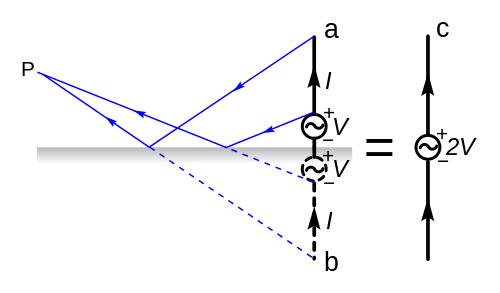Could someone explain why this sentence makes sense:
A monopole antenna transfers energy from electrical domain to the electromagnetic domain, hence must contain (equivalently) a resistor, hence must have 2 or more terminals.
Why must it contain a resistor and how can you conclude that you need 2 terminals because of the resistor?
Also,
A monopole is half of a dipole with groundplane in its symmetry plane and the drive is between antenna-feedpoint and ground(plane)
What is the symmetry plane? What does drive mean here? The transmitter?

